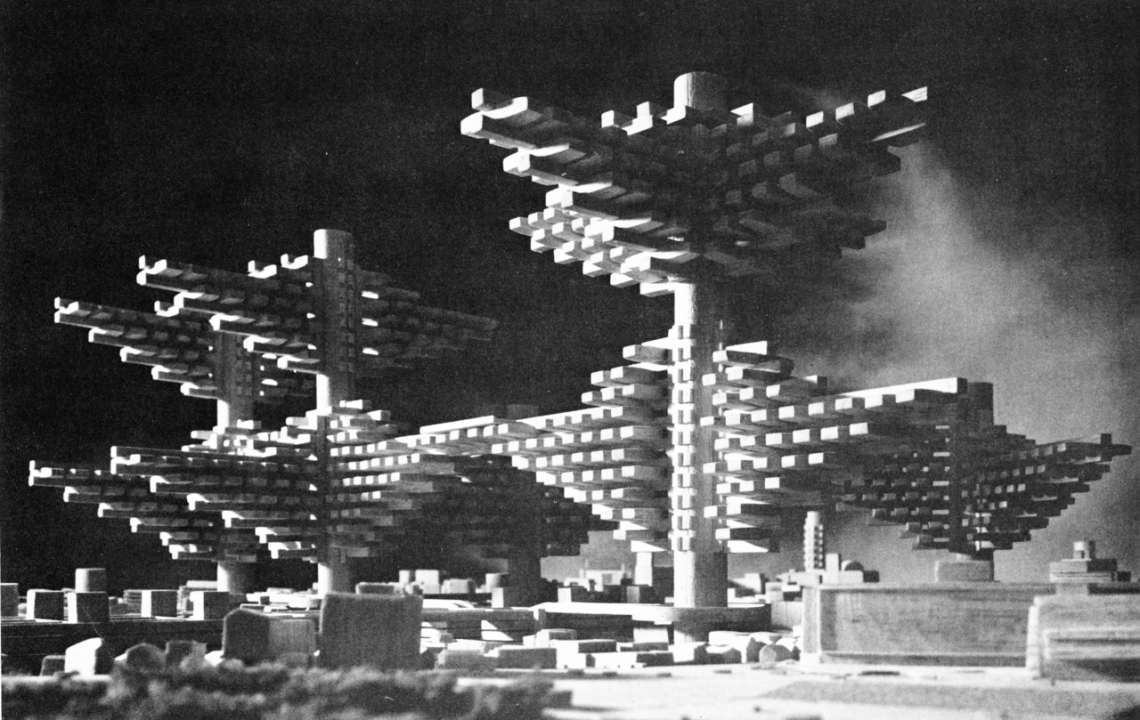
The Metabolist movement in architecture was founded in post-war, 1960s Japan, as the country, enjoying a growing economic and cultural prosperity, was searching for a new architectural identity for the modern age. Metabolism occurred at the same time as Archigram, and represented a different response to the same academic discussions that were occurring in Europe and a similar 1960s social condition. The focus of this movement was at the urban scale, with designs that represented the urban body as dynamic and changing, and the architecture itself being adaptable to the shifting needs of the inhabitants. The conceptual model was based on biology, hence the name of the movement, but also on space exploration and other examples of technological fascination embedded in pop culture, and mega-structural designs were often explored.
-Tobias

